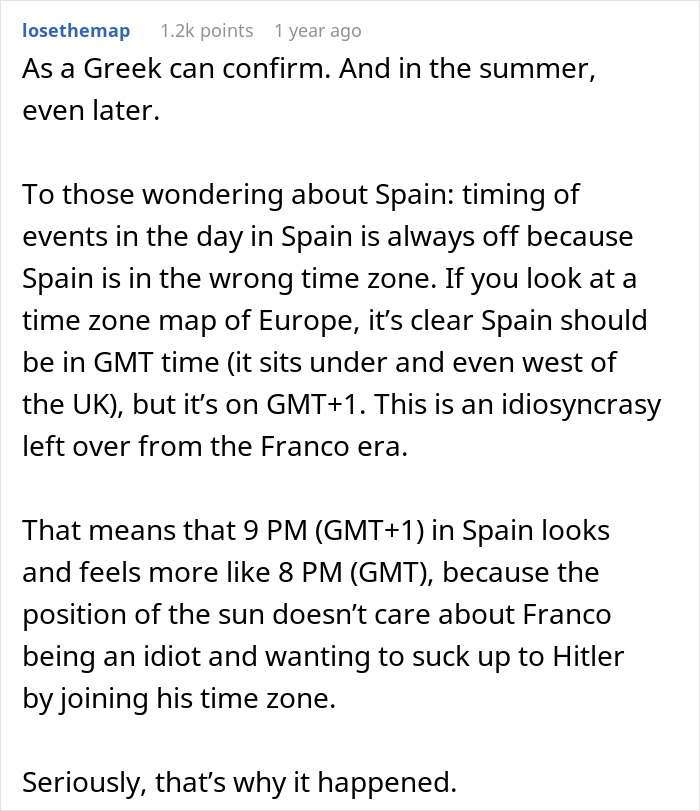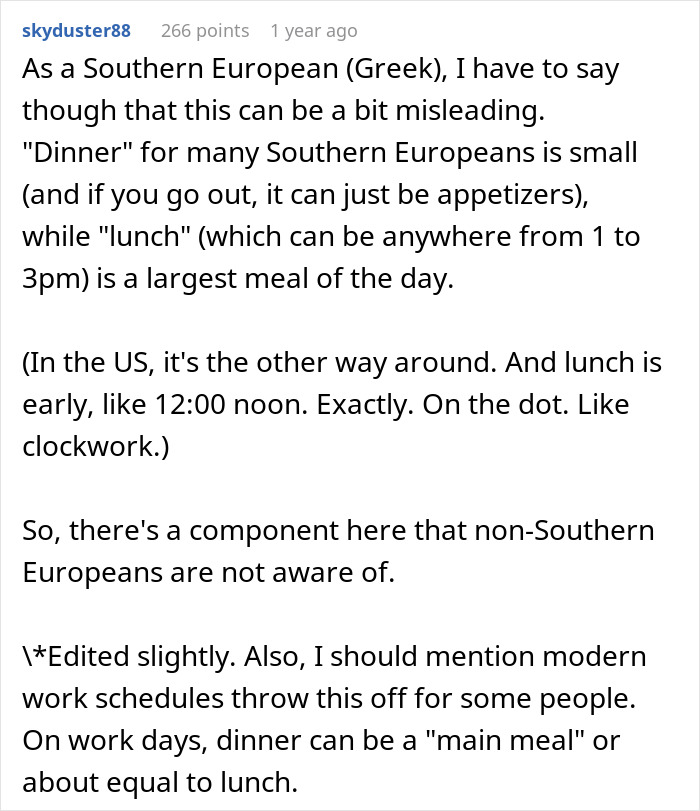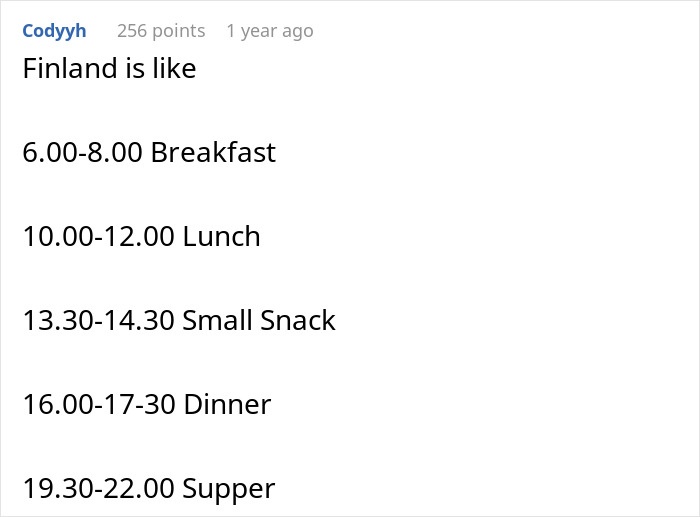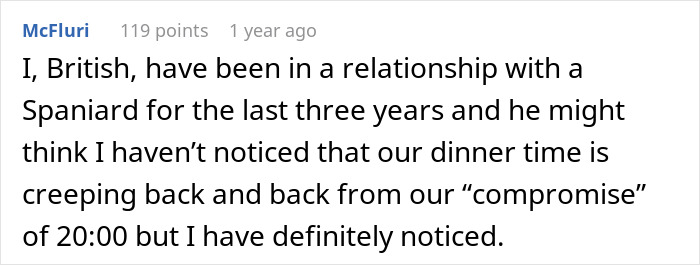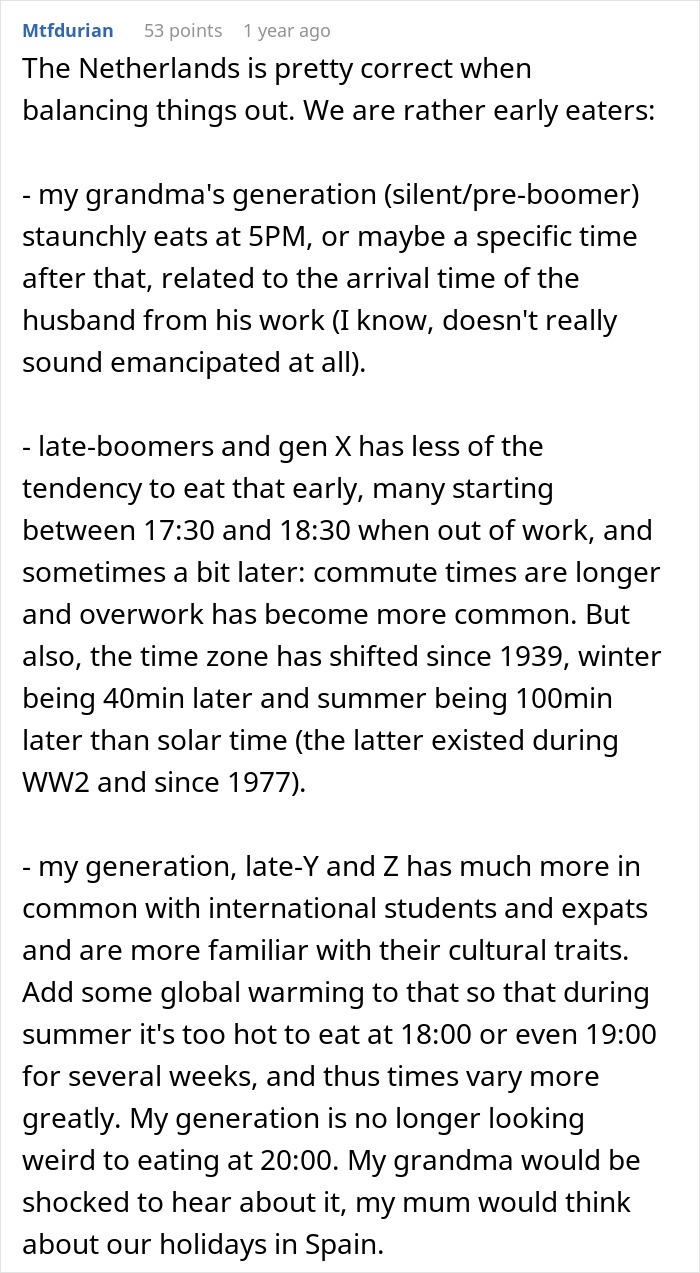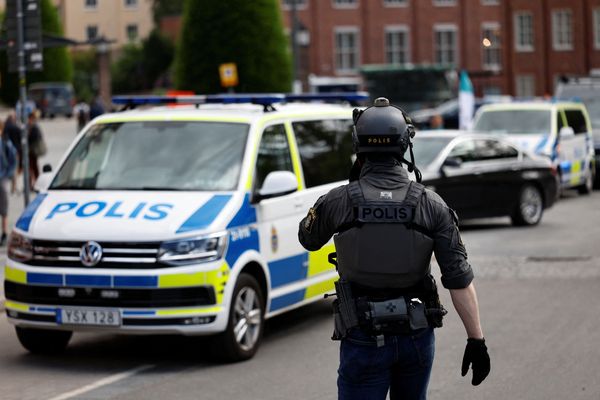So, it’s not a secret that each country has its own traditions, culture, cuisines and so on. Even while some countries that are close to each other might be similar, they always have differences. Now, speaking about differences, it turns out that in every country, the usual dinner time can vary drastically as well.
On that topic, maps that show eating habits in each European country are going viral and have sparked quite a discussion online. Some people say that it’s true and they can confirm, while others tend to disagree.
More info: Reddit
Maps of usual dinner times in Europe’s countries are going viral and it’s fascinating to compare


Most likely, everyone has a different time when we tend to eat dinner. Probably most of us, when growing up, used to eat dinner earlier, then when we started studying or working (or studying and working) our schedules changed and dinner time also shifted. However, we may think that in any case, everybody eats at a similar time – well, not really.
The map may seem overwhelming, so let’s break it down a little bit. It seems that if countries are geographically near each other, dinner times are quite similar. So we can see that the earliest time of dinner is in Norway and Finland – usually a little bit after 4pm. Then there are Sweden, Denmark and the Netherlands who eat dinner right after 5pm.
Then, there are quite a few countries whose dinner times range from 6pm to 7:30pm. They include Germany, Czech Republic, Slovakia, Belgium, Ireland, and the United Kingdom. And countries who tend to start eating around 7pm – Lithuania, Latvia, Estonia, Poland, Belarus and Ukraine.
As we go to later dinner times, here we have Italy and Greece who tend to start eating around 8pm. And finally – late-night eaters Spain and Portugal, where, according to the map, people tend to have dinner in the 9pm – 10:30 pm time range.
So while, obviously, it’s impossible for everyone to eat at these exact times, quite a few netizens agreed with the shown times and shared their personal stories. “That’s the nice thing about vacationing in Spain, Norwegians never have to worry about seat reservations,” one user shared. “As a Greek can confirm. And in the summer, even later,” another added.
Usual lunch times also differ in each European country

Image credits: u/llondru-es
The map shows that the countries that have the earliest dinner times—Sweden, Norway, Finland, the Czech Republic, and Slovakia—are those that have lunch the earliest as well, ranging from 11am to 1:30 pm.
On the contrary, people who have lunch the latest, that is, in the period of time from 1:00pm to 3:00pm, are Spain, Poland, Belarus, Ukraine, Greece and Italy.
And breakfast preferences – which countries tend to choose sweet and which salty?

Image credits: @loverofgeography
There are probably two main types of people when it comes to breakfast preferences – folks who need to eat something sweet in the morning and others who always choose salty options. Well, this map actually also divided countries into these 2 categories.
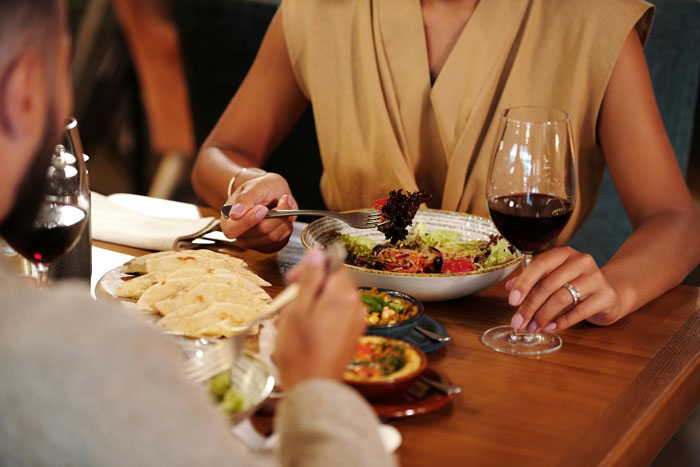
Image credits: Jep Gambardella (not the actual photo)
“The divergence in meal times across Europe is so striking that we could draw a line to separate the early eaters from the late eaters,” shared Marie-Ève Vallières, the travel blogger behind To Europe & Beyond, with Bored Panda.
“The northern half (including the UK, Scandinavia, Germany and Eastern Europe) tends to have an earlier dinner time, typically between 5 and 6 p.m,” she added. “Conversely, the southern half, particularly around the Mediterranean, tends to have a much later dinner time. In countries such as Italy and southern France, it is common to have dinner around 8 p.m., while in Spain it can even be as late as 10 p.m.” Well, looks like the map wasn’t lying after all!
Also, we were interested to hear Marie-Eve’s opinion on how regional cuisines, dining traditions or climate influence when people eat their main meals. She noted that, for example, hot afternoons in Spain make it uncomfortable to engage in any kind of activities, leading to a tradition of downtime called siesta.
“As a result, dinner is postponed until the weather cools down, allowing for more pleasant cooking and eating experiences.”
However she emphasized that in Northern Europe, traditional cuisine leans towards heartier, more substantial meat-based dishes, possibly serving as a culinary strategy to combat the harsh, cold climate. “While on the French Riviera, it’s not uncommon for lunch to simply be a simple salade niçoise (greens topped with tuna and eggs) for a cooling, fresh yet filling meal to beat the heat.”
Marie pointed out that this intricate link between climate and local produce not only defines the flavor profiles of regional dishes but also underscores the deep connection between culinary practices and the geographical landscapes that inspire them.
“Europeans are notoriously more attuned to sourcing locally and celebrating seasonal produce in a market-based cuisine, and they have ingrained a commitment to freshness in their ancestral culinary traditions,” she noted.
Finally, Marie-Eve shared that if you want to learn about European culture, a wonderful way to dive headfirst into a new culture is to adapt to local food specialties! “Culinary traditions are so closely tied to national identity and the sharing of a common experience. Everybody speaks the language of good food and good company!”
“I know I have fond memories of a particularly low-key dinner in a London pub at Christmastime when the owner surprised everyone by inviting a choir to sing carols,” she remembers. “Or the time there was a mix-up with my reservation at a fancy restaurant in Modena and I ended up having amazing homemade tortellini in a family-owned trattoria where they didn’t speak English and I didn’t speak Italian, and yet we made it work!”
Redditors shared their opinions regarding dinner times across countries





